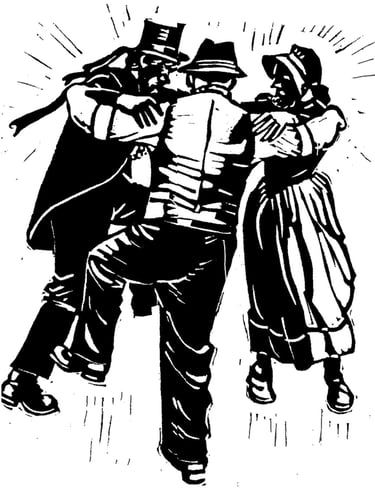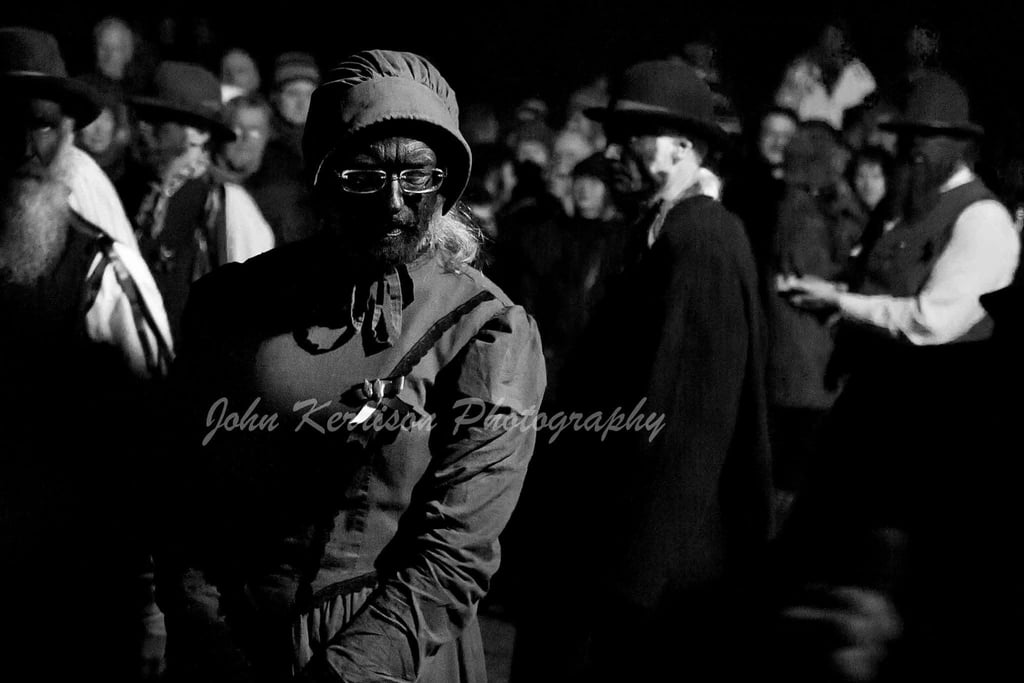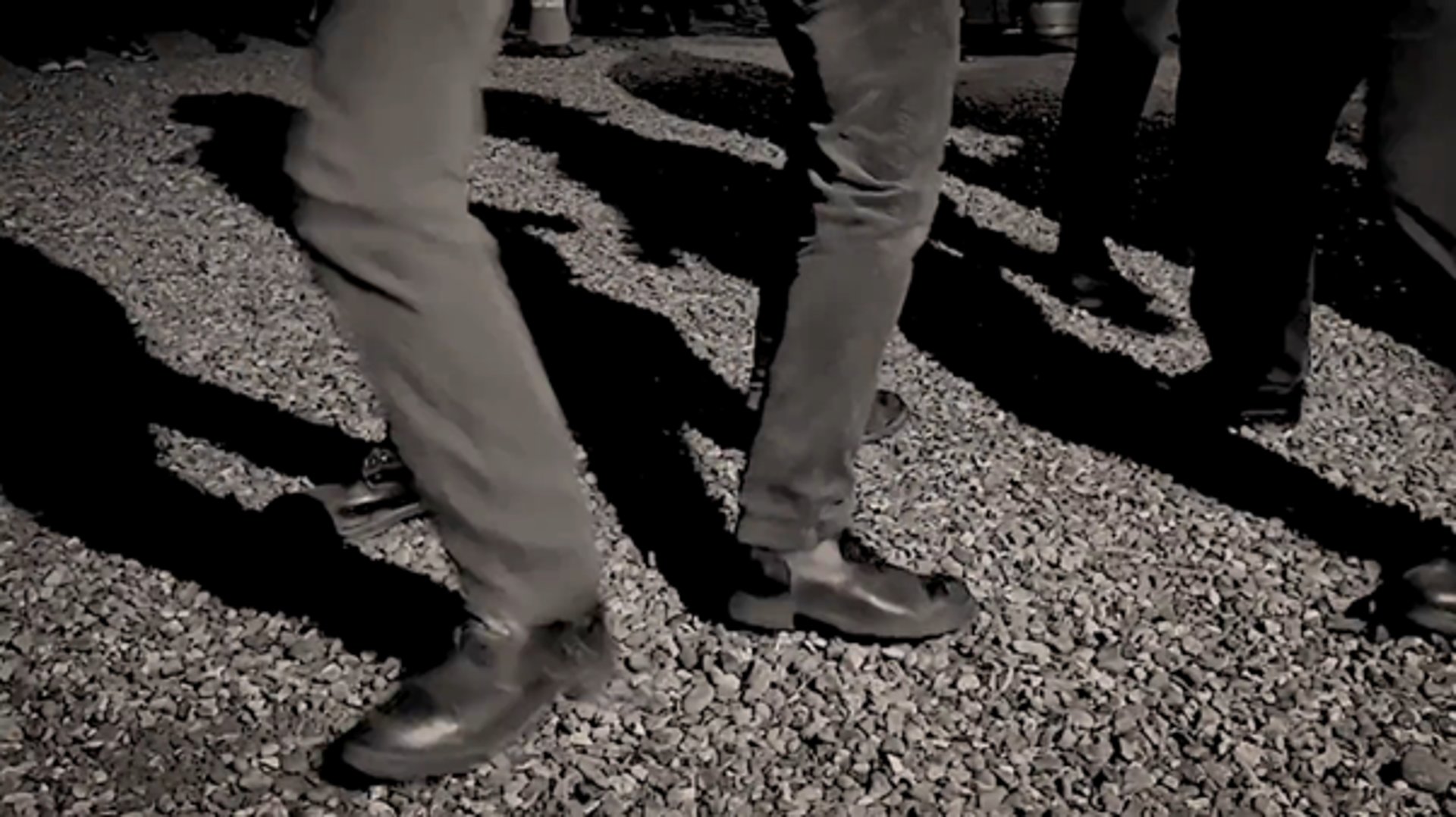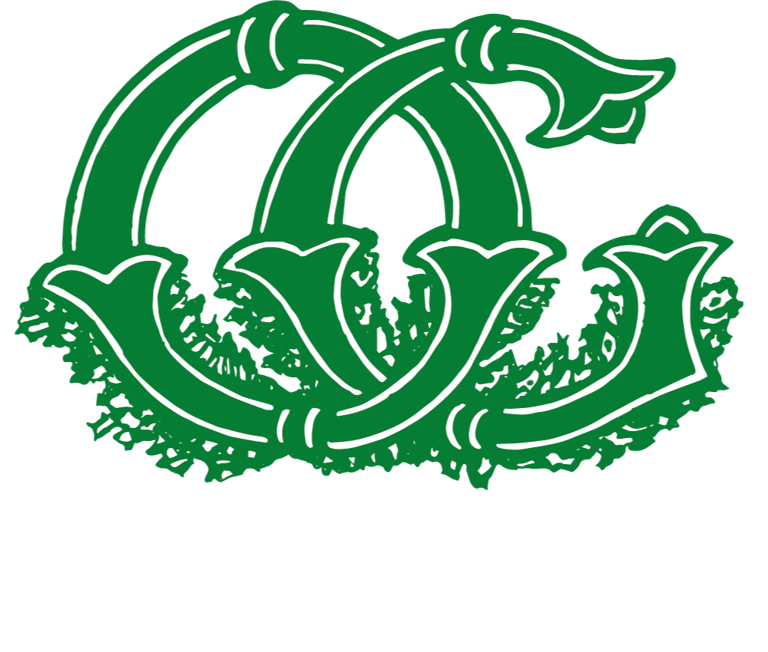In the Beginning
A personal account of the creation of Old Glory and the events leading up to it
Kenneth May
6/9/20249 min read
My story starts way back in August 1977 when, as a new graduate, I moved from my birthplace in Lancashire to darkest Essex for work. I promptly joined Chelmsford Morris (Cotswold Morris, quite unlike the North-West stuff that I had been familiar with ‘up north’) and the Chelmsford Folk Club (where I was a ‘floor singer’ most weeks in order to get free admission). I made the acquaintance of Mr Colin Cater, who was a musician with the Morris and a resident singer and musician (melodeon and Anglo concertina) at the Folk Club, and we soon became good friends. I had started to play melodeon, and Colin gave me a lot of encouragement and recorded a great many tunes on tape cassettes for me to practise with. Colin was just learning to drive and had inherited a car, so I was able to repay him by accompanying him as the qualified driver during weekend practice sessions and trips further afield when he had a gig booked at a folk club somewhere. It wasn’t long after he passed his test that he moved away but, as will become apparent, his influence on my life was far from over.
During my time with Chelmsford Morris, a couple of interesting things happened. The first was that a number of interested individuals from several of the Essex Morris sides got together to dance Molly on Plough Monday. The group was originally called Essex Molly, but eventually became Good Easter Molly. I was one of the musicians in the first year, and soon learned just how slowly you have to play for Molly. The other was an invitation, sent to several Morris sides, from The Seven Champions, inviting anyone interested to a Molly workshop in Cranbrook, Kent. I think I was the only one from Chelmsford who went. It was quite late in the year and, although Essex was bathed in warm sunshine, it was quite a shock emerging from the Dartford tunnel to discover that Kent was under three or four inches of snow. Still, I reached the pub in Cranbrook and was amazed to find that the workshop was to be held in the function room on the first floor above the bar. Even more amazing was that, after all the stomping that went on for the next few hours, the bar ceiling hadn’t come down. We learned a great deal about Molly, about dance construction, steps and music, and we learned precise details of just how Seven Champions interpreted the tradition.
In 1983, to my delight, my job moved to Suffolk. I clearly couldn’t continue with Chelmsford Morris but, over the next several years, I danced with a few different Morris sides in Suffolk, both Cotswold and North-West, a couple of which still exist and a couple of which faded away because of lack of members. The Cotswold sides were men-only, but the North-West was mixed, and among the members were Paul Aldis, Kathryn (‘Kate’) Aldis, Daphne Flisher and John Barnes. For the record, in 2008, Daphne and I joined the fledgling Rumburgh Morris, a mixed Cotswold side, which is still going strong.
In the summer of 1994, we found ourselves in Greenwich, as guests of Greenwich Morris for their Day of Dance. One of the other invited dance sides was The Seven Champions. We watched everything they did and, later on, Paul, Kate, Daphne and I stood by the Greenwich observatory and discussed what we had seen. I can’t remember which one of us it was, but someone said “We should be doing that in Suffolk” and we all agreed. We four met up again at the Towersey festival at the end of the summer and decided that we would actually do it. Further meetings followed, during which we agreed exactly what our, as yet unnamed, Molly side would actually look like.
Dancers would be all male, dressed as Victorian/Edwardian farm labourers in collarless shirt, waistcoat bedecked with ribbons, neckerchief, brown corduroy trousers and black boots, preferably hobnailed. We initially decided on a flat cap, but later changed to a trilby-style hat. Bearing in mind that we intended to perform only in winter, we agreed that, when not dancing, the men would wear a dark overcoat. Two of the dancers would be appropriately attired as Lord and Lady, the latter fulfilling the requirement for the presence of a ‘molly’. Musicians would be all female, dressed in dark coats and wearing hats adorned with ivy. Initially it was just a small sprig, but later on it became more and more elaborate (and heavy). The musicians would also have a green sash. Other characters would include a whiffler, who would be responsible for marshalling the dancers, an umbrella man, who would act as announcer, a box-man (or a collector of some sort) and a broom-man, who would clear the way for the dancers. Everyone would be disguised by the use of black face paint. At that time, nobody made a fuss about black face paint; it was many years later when Old Glory, as it became, decided to change to grey as a matter of self-preservation.
It was left up to me to create both a unique dance style and a variety of dances to perform, and Kate would arrange appropriate music. A peculiar aspect of traditional pub music in our part of Suffolk was that much of it was played on one-row melodeons in the key of C, so we decided that all our music would be played in C, and whenever possible it would be led by a musician playing a one-row melodeon. The most important thing that we all agreed on, however, was that it was all about theatre. Apart from the music and the announcements from the umbrella-man, everything would be conducted in silence. All dancers and musicians would remain stony-faced and it later became something of a challenge for members of other sides to try to make us smile. No names were to be revealed, especially not to the press.
Having made all these wonderful plans, we now needed to persuade some dancers and musicians to join us and form the founder side. Paul and Kate invited their friends David and Janet Woods, who also brought their son Ben, and their friends Matthew and Lynda Robertson. John Barnes was invited, as was Robin Peters, a fellow dancer from one of the Cotswold sides that I belonged to. Paul was whiffler, David was umbrella-man, Matthew was broom-man and Lynda was collector. John, being tall, made a splendid Lord, and I was Lady. Musicians were Kate on melodeon, Daphne on penny whistle and Janet on alto saxophone.
We began having Sunday-morning practices in Rumburgh village hall. I had cooked up a few dances to start with, based loosely on country dances, and taught them in a very strict style. I was conscious of what I had learned from The Seven Champions, and was determined that we would do everything differently, so that nobody could accuse us of copying them. Our basic step was a high single step that displayed the hobnails on the boot soles, with the emphasis on the stamp, while keeping the body upright and swinging the arms in a natural way, i.e. opposite hand to foot. The step for the swing-and-change and for dancing in a ring was a double step, with the hop replaced by a scrape. The swing-and-change itself was choreographed to be in a ‘plus’ shape across the set, in contrast to the diagonal shape used by The Seven Champions (although we called it ‘lunge and grapple’, just as they did). When in set but neutral i.e. not actually dancing, all dancers would stand absolutely still with hands behind the back. When joining in, each dancer would stamp twice, in time with the last two beats of the previous bar of music. One of the first dances was The Sportsman, a dance which remains in the repertoire to this day. We weren’t as fit as we thought we were, and it seemed to take a very long time to get the Lord and Lady back to the top. When it finally ended and we were all in a state of collapse, someone said “I think I’m going to be sick, I’m just going to find a bush to throw up behind”. And so, the signal that the dance had ended and the dancers could disperse became the word “Bush”, called by the Lady (or whoever was in that position).
Now, as if this wasn’t enough, folklorist Pete Jennings had made contact with Paul, and informed him of the tradition of the Cutty Wren, last seen in the village of Middleton on St. Stephen’s Day over a hundred years ago, and documented in a book by a local historian, although at the time Pete couldn’t track it down. This rare example of a wren-hunting tradition in England, and on our doorstep, was too good to ignore, so we decided that we would celebrate it as part of our first season’s programme. Daphne carved the wooden wren that we still parade on St. Stephen’s Day, and fixed it on top of a pitchfork provided by John Barnes. We kept the ceremony fairly low-key, since we hadn’t located the book that described it. I did find it much later (‘An Hour-Glass on the Run’ by Allan Jobson) so, with a few extra practices, we were able to make a much bigger show of it in our second season.
When we started practising, we were still without a name. We were aware of a magazine that specialised in steam engines and associated agricultural machinery, called ‘Old Glory’. That name evoked a sense of pride in bringing back things from the past that had been forgotten. Now, wasn’t that just what we were doing? Daphne suggested that, and it was agreed. So, the Old Glory Molly Dancers and Musicians officially came into existence. Kate designed the ‘OG’ logo that we still use. Paul made the big collecting box.
Most of our dances were created by me, and several (including 2/6, Stamping the Old Ground, The Buck, Roll of the Dice and Solomon’s Seal) are still in the current repertoire. There are a few notable exceptions: The Quilt and Molly’s Molly were devised by Matthew, and the Five Hand Shuffle was devised by Peter Dugdale.
In the spring of 1995, I received an invitation to go, with a guest, to my old friend Colin’s wedding to Karen, in the following July. The wedding itself was private, followed by a blessing ceremony in the church and a ceilidh in the evening. I asked Daphne to go with me, and she accepted. Suffice it to say that we went as friends and came back as a couple. We were married in July 1996 and, of course, Colin and Karen were guests of honour. Paul was my best man, and Kate was matron of honour. Both were witnesses to our marriage.
Karen Cater is a very talented artist and, together with Colin, set up Hedingham Fair in order to sell the greetings cards and posters that she designed and made, as well as t-shirts and all sorts of books. Colin and Karen continued to follow the exploits of Old Glory and took many photographs. Karen subsequently produced the lino-cut image of the three dancers that we still use today, with Karen’s permission, and included it on her ‘Penny for the Ploughboys, Only Once a Year’ card. The image is actually a snapshot of a moment in a long-forgotten and rather difficult dance for five dancers called the Ten Bob Bit. Long may it remain forgotten. I knew there was a very good reason why none of our dances has ever been officially written down.
In the early years of Old Glory, I got in touch with Elaine Bradtke, assistant librarian at the Vaughan Williams Memorial Library in Cecil Sharp House. One thing I learned was that there was absolutely nothing in the library that referred to Molly dancing in Suffolk. I sent Elaine copies of our programmes, which had upon them Karen’s ‘three dancers’ image. I didn’t know at the time, but Elaine was just about to publish her book about Molly dancing in East Anglia before 1940 (largely centred on Cambridgeshire), entitled ‘Truculent Rustics’, and was looking for a suitable image for the front cover. When the book was published in 1999, I was astonished to see the ‘three dancers’ on the cover. Not only that, but Karen had identified the dancers and our names, as well as the name of Old Glory, were listed in the book itself. Although we were a revival side, and one from Suffolk at that, Elaine thought that the image “seemed to capture the essence of the past”. There could be no higher praise.
A little later that same year, Colin turned up out of the blue and sang a new song that he had written entitled ‘Penny for the Ploughboys’. From that year onwards until I had to retire from dancing, I sang that song, with Colin’s blessing, as part of Old Glory’s Plough Monday celebration at the Rumburgh Buck.
People seemed to like what we did in that first season, and each year we attracted more dancers and musicians. We acquired a bass drum, and used it to display the names of the dance tours, as well as for making a loud noise. Over the years, both dancers and musicians have come and gone, and a variety of instruments entered (and in some cases left) the band, including recorders, English concertina, tea-chest bass, snare drum, jingle stick, washboard, trombone and rommelpot (a friction drum, popular in the Netherlands), the last two in Daphne’s hands. Daphne also played the bass drum for several years and, on one occasion in 1996, in the highly unusual absence of any melodeons, Daphne led the band playing a portable harmonium that we had bought on our honeymoon. She also tried to introduce a rauschpfeife, but it was just a bit too loud.
We lost Paul in 2012, and the three remaining founders, Kate, Daphne and myself, decided to retire from active participation some ten years later. I may have carried on for a little while longer, but I had some spinal tumours that just made it impossible to dance any more. Old Glory is now in new (and, we hope, safe) hands.
© Kenneth May, 2024


Image: Karen Cater



